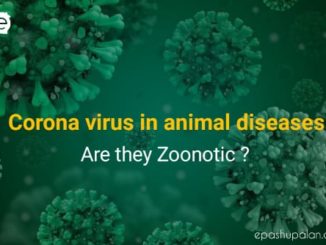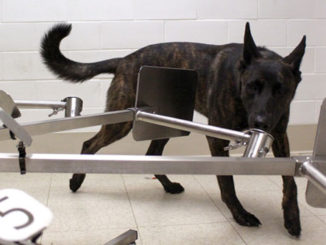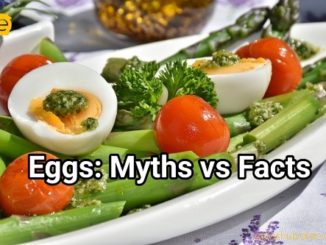Genetic selection finds its way from the time of ancestors. Although our ancestors were not having any knowledge about genetics but still they were able to influence the DNA of plants and animals through a process called as selective breeding or artificial selection. Although selective breeding is entirely different than genetically modified animals. Genetically modified organisms (GMO) are the organisms (i.e. plants, animals or microorganisms) in which the genetic material has been altered in a way that does not occur naturally by mating and/or natural recombination (WHO, 2014). From time to time the GMO’s has played an important role in the agriculture and allied sectors mainly focusing on the GM agricultural crops and GM livestock. Genetic modification (GM) technology allows the transfer of genes for specific traits between species using laboratory techniques. In 1983 an antibiotic resistant tobacco plant was used for producing first genetically modified plant. In 1994 Flavr Savr tomato was the first food that was approved for release and human consumption. The first country that was able to commercialize a transgenic crop i.e., virus resistant tobacco in 1993 was China.
GM animals
The development of GM animals began in the late 1980s. Developments in GM are taking place in a diverse and international context. Among all the research procedures done on animals 36% of procedures are used in genetically modified animals. GM animals are transforming public health through biomedical, environmental and food application with significant benefits in human health and food security. In medical research GM animals have been developed for vast purposes ranging from simple toxicological tests to development of organs for human beings. Gene modification of animals can be used to create the models for study of disease pathways and will help in assessment of new therapies and understanding gene functions. GM technology is used to produce human therapeutic proteins like growth hormone, insulin, blood clotting factors and ɑ-1-antitrypsin in the milk of sheep, goat or cattle. Spiders silk spinning genes has been incorporated into goats and this silk protien has been harvested from milk of goat for variety of uses. Several medical uses of spider silk fiber have been found that includes making artificial ligaments and tendons, for eye sutures, and for jaw repair etc. Few of the other GM animals developed or in trail stage includes less methane emissive cow, super muscly pigs, allergy free milk, organ donor pigs and vacanti mouse etc. Production of double muscling and disease resistant livestock and Enviro pig may help in combating the global need of animal protein. Xenotransplantation as one of the earliest genetic modifications of larger animals was the development of GM pigs carrying a human gene that could prevent the acute rejection of organs transplanted between pigs and humans. Genetic modification in animals leads to increased growth rate, improved feed conversion ratio, improvement in disease resistance and improved quality of livestock products (milk, meat and wool). Genetic modification is also used in amelioration of animal pathologies associated with poor diet, to reduce the environmental impact and for improving productive and reproductive performance in animals.
Although there are many uses and benefits of GM animals and plants to mankind but is it really justifiable to use them and to became fully dependent on them? Commercialization of GM animals has to consider various aspects before getting the full approval for worldwide applications. Many of the uses of GM animals have both positive and negative aspect associated with them. Among various aspects if we name the few that will include;
Transgenic animals and welfare
On one hand transgenic animals are thought to improve the welfare of animals through improving disease resistance by introducing specific genes into livestock that decrease the chances of the disease occurance by producing cattle resistant to parasitic, viral and infectious and genetic diseases. But on other hand the procedures involved in creation of the new GE line of animals are often painful and invasive involving sacrifice of some animals and surgical procedures on others. Unintended effects of genetic modification includes interfering with the genome of animal that may result in alteration of the animal’s normal genetic homeostasis, behavior, well-being and other unanticipated outcomes.
GM animals & Environmental Impact
GM animals are thought to provide promising results in decreasing the environmental impacts by Increasing efficiency and productivity per animal through producing more food from less land and animals hence less pollutants entering soil and water. This will also result in less Manure production and less competition for human food and natural resources. But experience built up through decades of environmental impact studies suggests that the impact of new biological elements in ecosystems may take years or decades to be understood. There can be various environmental impacts by introduction of GMOs the major ones include the ecological and genetic. The genes that are modified or introduced may end up in unexpected places and can interact with native and wild populations which may occur directly by predation or competition, or changes in land use or farming practices will have the indirect impact.
GM animals & Human health
The major idea behind the introduction of GM animals was the making human life easier and human health much affordable and valuable. But there are concerns regarding the health issues related to GM animals as well as GM based plant foods. If we talk of GM animals the main two GM animals that address for food security and Environmental conditions are GM Salmon and Enviro pig. With GM Salmon there is uncertainty associated with consumption of food that contains high levels of hormones and more ever no animal feeding studies using diets supplemented with GM salmon have been conducted. Regarding the Enviro pig no adverse effects to human health have been found except some occupational allergies due to powdered phytase, but long term risks regarding the same has not been yet identified. There have been various reports regarding the increasing allergies due to Genetically Modified Foods. Since late 1990s one out of every twenty children has developed food allergies in USA (CDC, 2013). Some of the examples are Brazil nut allergies and presence of Bt. Toxin in human blood. Glyphosate based herbicides has shown to cause malformations in experimental animals.
The issues pertaining to GM animals are very vast and will take ample time to make the air clear about their use at larger level. There are issues pertaining to ethics, food security, regulations and socio-economic concerns. Degrading animals to the point they will considered just as commodities and then the biggest one playing with nature. The major question remains here if alternative methods are available can GM animals be justified. For example the patented and trademarked Enviro Pig (GM pig) produce less phosphorous in its manure, thus making it more environmentally friendly. But on the other hand there are alternative ways to control phosphorous content by adding phytase supplement to pigs feed instead that can decrease the phosphorous content in manure. Another example is pigs have also been genetically modified to produce higher amounts of omega-3 fatty acids but introduction of omega-3 fatty acids in the meat of pigs is also possible by feeding pigs a diet supplemented with flax seeds and vitamins. One more example is that cows are being genetically modified to be resistant to mastitis, or to be resistant to BSE or mad cow disease but these diseases are considered as production diseases and a by-product of the intensive factory farming production methods used on many farms today and can be avoided just by adopting good management practices.
Monitoring of GM animals
There is urgent need to re-evaluate consumer attitudes in light of new information that has since emerged regarding transgenic organisms. It is required to do additional research on potential long-term effects of consuming GM foods. Additional experiments with adequate sample sizes are needed to verify that there is no biologically significant difference between levels of hormones such as GH and IGF-I in transgenic and non-transgenic animals . A wide range of side effects were produced in early genetically modified animals like lameness, susceptibility to stress, and reduced fertility. The close monitoring of the genetically engineered animals is must in order to find out and mitigate any unanticipated welfare concerns that may rise at any stage of their production. Due to absence of predictability greater monitoring is needed in newly created genetically engineered animals than that for regular animals. A better idea and method that can be used and implemented in current scenario is the implementation of a genetically engineered animal passport. This passport can remain always with the GM animals and will alert the animal care staff for the particular welfare needs of that animal. It will be also important for the future breeding and care of the GM animal if intended at any stage of life. This will also be helpful in taking better care and husbandry of the offspring in future.
Role of veterinarians
Veterinarians need to inform themselves about any special care and management required by GM animals. Veterinarians can play any important role in contributing towards the policy discussions related to the genetic engineering. They can inform the public about genetic engineering techniques, potential impacts to animal welfare and food safety. They have to make themselves aware of the current context in which genetically engineered animals are created and used.
Conclusion
In the world where human health, animal health and environment is totally linked or in other words one health one future is the need of the hour. Any alteration in genome one animal or one organism can affect the whole population of the world. In a world where a single strand of RNA can lead to lockdown of the whole world in a matter of months the genetic modifications and alterations in living organism need to be done wisely. There should be strict rules and regulations regarding the experimentation and application of the Genetically Modified Organisms. Major application of Genetic engineering is to solve global issues in medicine, food and environment. No matter how beneficial it is it comes with drawbacks. Modification brought to living organisms are given strong ethical consideration, regardless of how and where the technology is applied. To be able to counter these issues, strong scientific proofs and results must be provided on GMO’s on how they interact with Environment, Humans and Animals. We can’t make sweeping generalizations about the GMO’s but case by case verification about their application is necessary and need of the hour.






ಸೂಪರ್ ಸರ್ ನಿಮ್ಮ ಬಗ್ಗೆ ನಮಗೆ ಹೆಮ್ಮೆ ಆಗುತ್ತಿದೆ.🙏🙏
Meticulous work! Very Informative!
Really informative! Thank you so much!
Very informative
This is beautifully written…